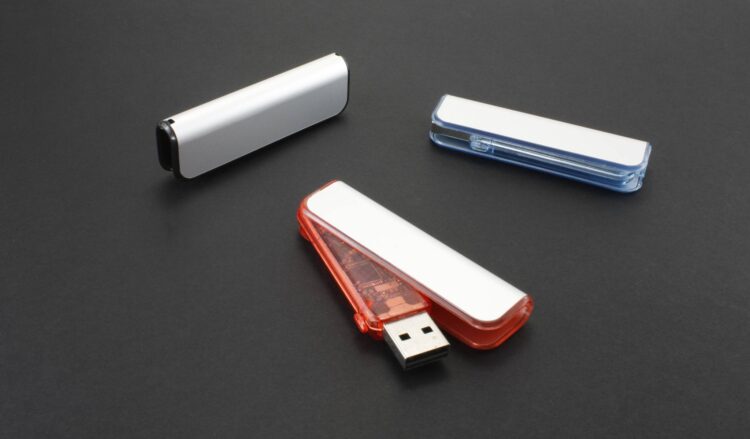You’ve been hit by a car in Rome. You lost your wallet. Need to get online in a sketchy internet café in Rio? Don’t you wish you had a USB flash drive on you?
Getting stuck in a strange country with no money, no credit cards, no ID, and no medical or insurance documents can be pretty inconvenient. In a medical emergency – life-threatening.
A travel flash drive that has your medical and emergency contact information might just save your life, though. Here’s how to make your own.
Table of Contents
Pick a Good USB Drive
All you need is a small and simple flash drive; somewhere in the 1GB memory range will do the trick. For example, the Kingston DataTraveler GE9 is small, durable and has a loophole you could use to hang it off of stuff. It also looks cool.
If you’d like, you could always mark your drive so that EMTs, doctors, police, etc. would know to look at it. Just grab a red permanent marker or some red nail polish and mark your drive with a little red cross, the international emergency symbol.
For craftier folks, make a white background for the red cross which will make it stand out better. You could use some white electrical tape and wrap it around your USB. It's that simple and you can be sure it’ll scream “look at me in case of emergency” even when you can’t.
Categorize and Encrypt Your Data Files
The best way to go about doing this is to split your drive into two halves; open and encrypted.
The encrypted section should include:
- Scanned image of your passport, driver's license, and another state issued photo ID.
- Scanned images of your credit and debit cards, front and back.
- A file with your credit and debit card information. List the card and account numbers, expiration dates and CVV numbers of your cards. Include the toll-free contact numbers and international collect call numbers for each card company as well.
To encrypt files, use 7-Zip. You could find specialized flash drives that come with this extra security feature, but they can be pretty costly. 7-Zip is a free, reliable and cheap alternative to keeping your data secure.
Put all your important documents into one folder then use 7-Zip to encrypt the folder and everything in it.
The open section could include:
- A file titled “EMERGENCY.” Having it all caps will make them open this file first. In it, include your name, address, and nationality. Also, include a list of emergency contacts with their names, phone numbers, and email addresses.
- A file titled “Medical.” List your medications, allergies (food, bugs, and drugs) and your primary health care physician’s contact information. Make sure to include that you have health insurance somewhere in there just in case. You never know what doctor might not be willing to help you because they don’t think you’re ensured – it’s happened before.
- Include a scanned image of your insurance card, front and back.
Hold it in a secure place
One way to hold on to your drive is having it mounted on a sturdy chain and wearing it around your neck as a necklace or pendant. Alternatively, if you carry a money belt, you can slip it in there along with your passport and other relevant documents.
Ladies, don’t wrap it around one of your purse/bag handle loops – what if you get robbed?
Make sure you choose a good quality flash drive too. You can rest easy that it’ll be pretty water-resistant and won’t damage easily.
Extras
You might also want to include a portable version of your web browser. You can get portable versions of Chrome, Firefox and more that run directly from your drive through PortableApps.com. You never know what kind of snoopware they have running in public internet hubs and cafes. It’s best just to be safe.
Put whatever else you want on your drives. The stuff listed above are just the basics. Are you a parent whose son or daughter travels often? Gift them with a personalized emergency flash drive. USB Memory Direct can help you skip the arts and crafts part, and you can show your employees you care about them and their safety. The MM2 custom flash drive should do the trick nicely.
Here are some other neat ways a USB flash drive can come in handy when traveling.
Back Up Photos
A USB flash drive is a highly portable option for backing up all those photos you’ve been taking and freeing up some space in your camera’s memory card. Use any computer at your hostel or at an internet café to copy pictures from your camera to the flash drive.
Extra Entertainment Storage
One area most lightweight travel tablets and laptops lack in is storage space. Given that most tablets only have 8 to 16GB of space and small laptops often come with only 128GB, loading them up with enough music, movies, and other distractions to get you or your kids through an entire vacation might not be possible without some help.
Nowadays you can find a good USB flash drive with 64GB of memory that cost less than $20. With one of these, you can make sure you’ll have enough entertainment for even the longest of long trips and flights. Pack it with all those shows and movies you never found time to watch, and you’re all set.
Have any other suggestions to put on your drive? Hit the comments below.
________
This story was brought to you in partnership with USB Memory Direct.
This post was written by a guest contributor. Please reference the author's byline in the post above for more information. If you would like to guest post on Go Backpacking, please read our submission guidelines. For information on advertising opportunities, go here.
Planning a trip? Go Backpacking recommends:
- G Adventures for small group tours.
- Hostelworld for booking hostels.

